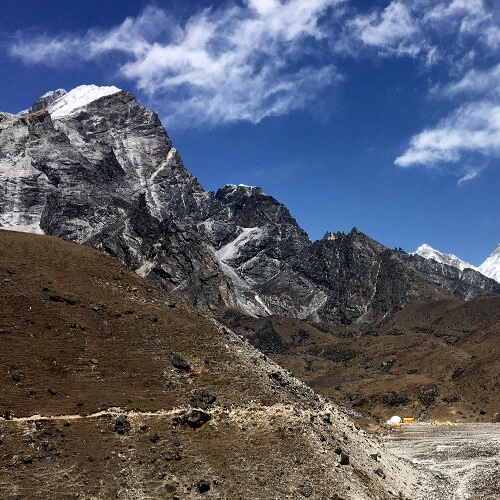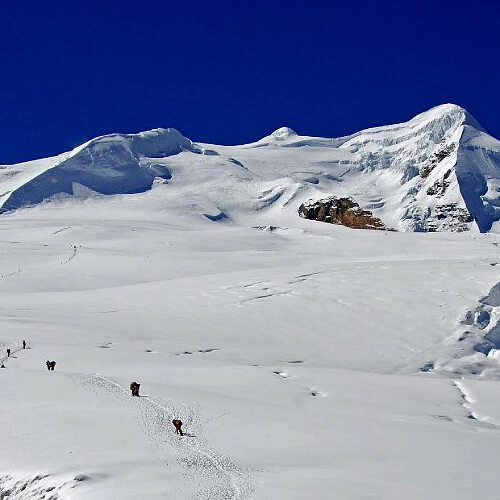Island Peak Climbing Overview
Island Peak Climbing is considered a trophy for trekkers in Nepal because it offers an unmatched close view of Mount Everest and many other Himalayan ranges. The Island Peak, also known as Imja Tse lies between Mount Ama Dablam and Lhotse at the center of the Chukung glacier – making it almost like an island.
Island Peak is a tough feat due to topographical conditions. But considering the thrill and the view it provides, it remains one of the hottest trekking peaks in the Everest region in Nepal. The peak is mostly used by climbers who want to scale Mount Everest or other peaks for practice because it is relatively hard for trekking for easier scaling.
Almost all the goodies that Nepal offers to its tourists: A walk through the alleys of Kathmandu’s rich cultural, ancient, historical heritages and diverse lifestyle; an amazing mountain flight that passes across some of the world’s tallest peaks, trek through the Sagarmatha National Park, the hospitality of the Sherpa people, climbing a peak and above all – takes you to so close to nature that you feel it in you.
Peak Climbing Difficulty Who Can Climb Island Peak?
The Island peak climbing is quite difficult because it involves technical climbing. During the trip, you will spend an average of six hours hiking each day. And the average trek time will be doubled on the summiting day.
Therefore, you must engage in strength and aerobic exercises to maintain optimum physical health. Although the climb is relatively simple compared to other peaks like Island Peak certain areas feature large fissures in the glaciers.
Advice: Previous climbing experience can be an additional benefit as the ascent to the summit will be a lot easier for you.
WHAT ARE THE OPTIONS AVAILABLE?
Well literally speaking – options are unlimited. If you have already visited the Everest base camp and this time just want to climb the Island Peak then we can arrange a straight-to-the-island package for you. And if you want to immerse yourself in the highlights of Nepal treks, then just leave the planning to us and you can enjoy your well-earned holiday. We will take care of the rest.



